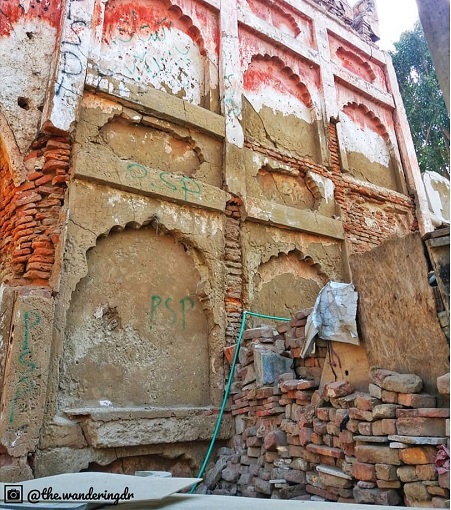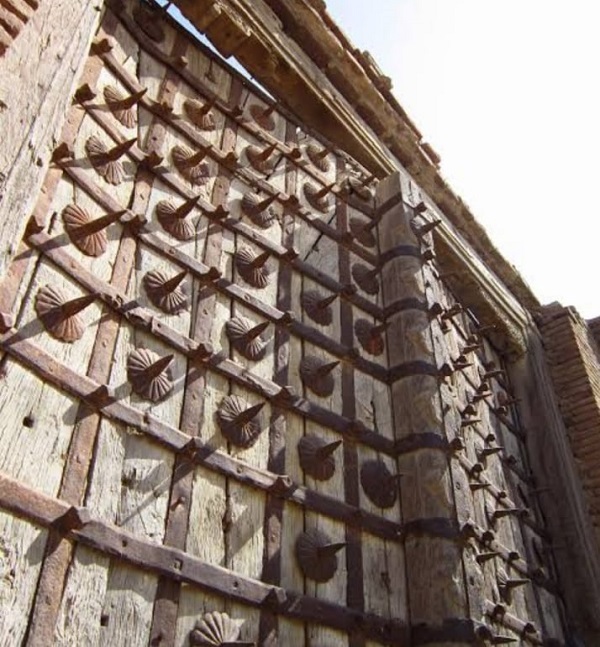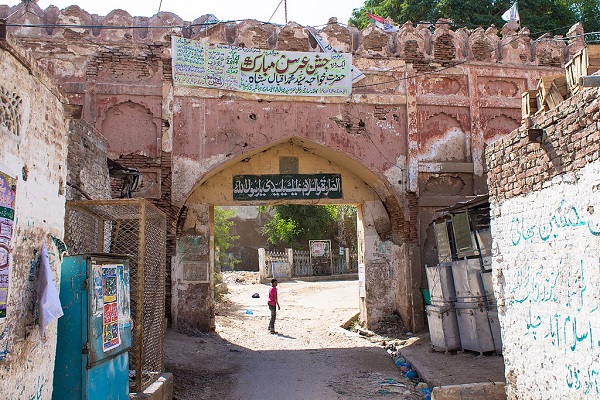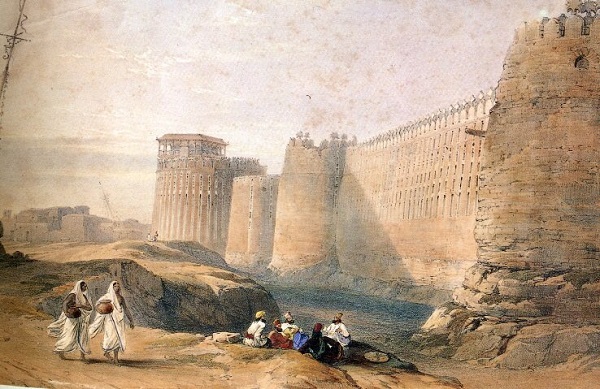Written by: Dr. Saba Noor
Posted on: October 21, 2021 |  | 中文
| 中文
Pakka Qilla, Hyderabad in 1844 (credits to Dawn.com)
Hyderabad is home to a number of ancient architectural masterpieces, and Pakka Qilla is one of them. Situated close to the Mukhi House Museum and the Hasrat Mohani Central Library in the streets of Shahi Bazaar, a tall mighty fort called Pakka Qilla (Pucca Fort or Royal Fort) is one of the prominent architectural monuments of Hyderabad. A lot of people in Hyderabad and Sindh are familiar with Pakka Qilla, but only a few have visited it and are aware of its history.
The foundations of Pakka Qilla were laid in 1769 by Mian Ghulam Shah Kalhora, a ruler of the Kalhora dynasty who ruled the region from 1757-1772. During the reign of the Talpur dynasty (1783-1843), several new buildings were added to the fort, and it was used as a court and accommodation for the ruling family of Mir Fateh Ali Khan.
During Talpur ruler Fateh Ali Khan's rule, the fort reached the height of its magnificence. It consisted of gardens, large halls, a mosque and a number of beautiful structures. In 1843, however, its decline began when the British defeated the Talpurs, and the fort came under their control. The colonizers demolished most of the nearby buildings, and the towers of Pakka Qila were also razed. They established two huge water tanks in the fort, which are visible from different parts of Hyderabad. The fort was used as a military store and office of the British, while Mir-e-Haram, the central building was used as the court, residential place, and a meeting hall by the Kalhoros, Talpurs, and the British respectively. In the whole process, the fort was heavily damaged.

A water pipe laid on the surface reflects the worst state of the sanitation and drinking water system in the Qilla
During Partition when immigrants from India were accommodated in the fort, the damage only increased. Originally, the fort was spread over 30 acres of land, but due to the permanent settlement of immigrants in it, present-day Pakka Qilla is spread over a few acres only. It is surrounded by many odd buildings, giving the whole area an appearance of a shantytown.
Known as Pakka Qilla because of the (pakki) bricks used in its construction. Structurally, the fort was ovoid shaped, but only some of its walls have survived. Towards the west, there is a dilapidated gate that faces Shahi Bazar. As you enter the gate, a few steps towards the left lead to Mir-e-Haram, which is still being used by the government offices. The area adjacent to the gate was converted into a museum, but over time, artifacts were stolen. Consequently, nowadays, there is no sign of a museum there.
As the fort is located in the center of Hyderabad and adjacent to a number of historic and religious spots, it has become a famous tourist attraction but is in dire need of renovation. Currently, the fort is in shambles and is surrounded by garbage, while the lack of a water drainage system further aggravates the condition of the fort.
The Government of Sindh and the Sindh Antiquities Department haven't paid any attention to preserving the abandoned fort. In the last ten years, many plans have been proposed for its conservation, but with no progress. The hope for its rescue continues because the Sindh Antiquities department has promised to restore the fort to its original form. The challenge is compounded by the fact that 50,000 people living in the fort have to be resettled and provided alternative housing. Moreover, the inhabitants of the fort have been running their family businesses for a long time, both within and outside the fort, which increases their reluctance to move out.
The Sindh government must restore this neglected historical heritage by relocating the inhabitants and the government offices within the Qilla, and by giving it to public-private partnership so it also be a source of revenue.



You may also like: